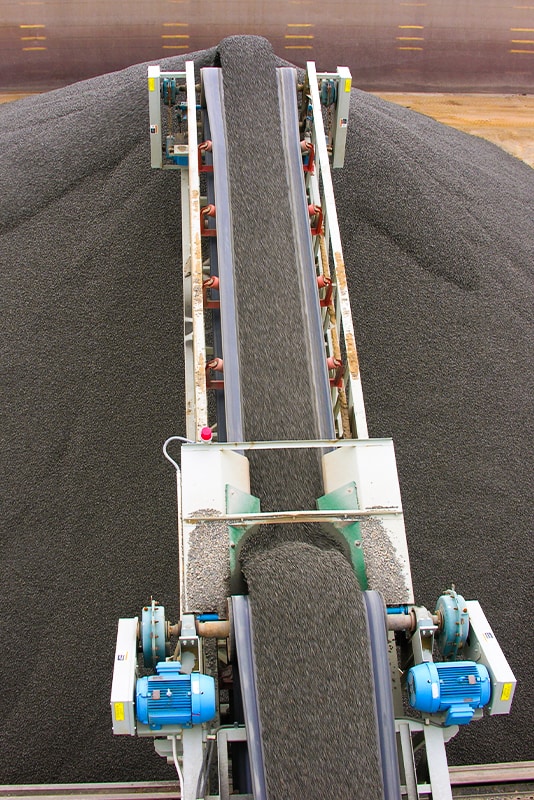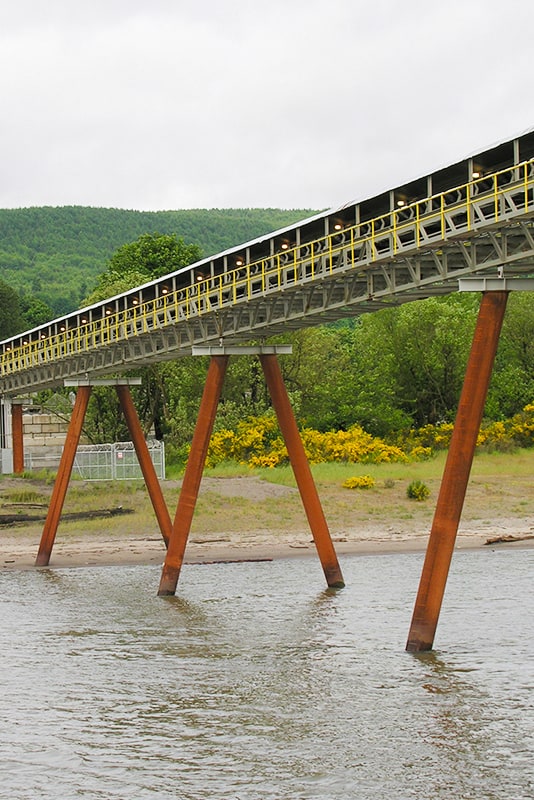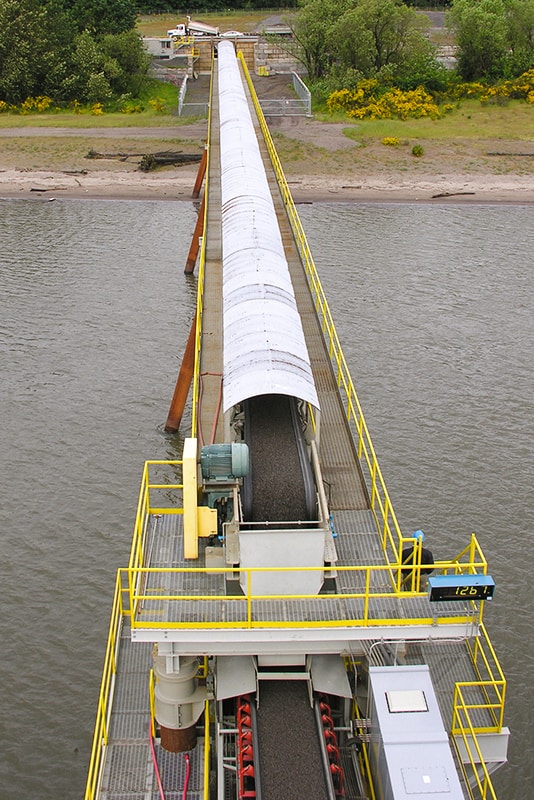Barge It
Riverside Aggregate Loading Facility Makes Waterway Transport a Cost-Efficient No-Brainer
Each year more than 420,000 barge loads of bulk commodities such as coal, crushed stone, and sand and gravel, travel to delivery points along our nation’s inland waterways. Moving this cargo via an alternative method would require an additional 24 million trucks or 6.3 million rail cars, says the Army Corps of Engineers whose statistics show that even a small 1,500-ton barge load is the equivalent of 15 jumbo railcar loads or 58 large truckloads.
Because river transportation is safe, efficient, and economical, it’s the most logical choice for producers who are able to tap into it. After considerable forethought and planning, an Oregon-based producer decided to harness the power of the nearby Columbia River. Founded in 1941, Morse Bros., Inc. (now owned by Knife River Corporation) is recognized as one of Oregon’s largest suppliers of aggregates, asphaltic concrete, ready mix, prestress concrete, and paving contracting services.
The company boasts 650 team members in 29 separate locations and generates approximately $123 million in annual sales. “When we acquired some properties on the river, we knew we had to look seriously at barging, as we knew it would be the most cost-effective way to move material,” says Knife River Transportation Manager Dave Jensen. So when the company created its new Waterview aggregate processing site near the town of St. Helens, a state-of-the-art loading facility was erected to allow the cost-efficient shipping of aggregate by barge into the Portland metro area, some 30 miles upriver. Jensen says that they chose the site because its access to the highway, the railroad, and the river, allows them to serve any customer conveniently and more profitably.
More than sixty percent of the material processed at the Waterview location is shipped via the river. The remaining thirty-plus percent is transported by truck or by rail. “River transport is clearly the most economical as we can move 8,000 tons of material at one time, as opposed to putting 35-tons on a truck,” says Jensen who estimates that shipping by barge, rather than by truck, saves the company more than $3 per ton. In its first seven months of operation, the barge loading operation saved the company more than $1 million in transportation costs alone.
One of the major hurdles in this initiative was engineering the transfer of material from the mining site to a wash plant and crushing plant located on the other side of the Columbia River Highway; followed by the stockpiling of finished product, and the
loading of material onto an 8,000-ton barge. The company needed to find the right conveyor system for a barge loading application.
Ultimately, Jensen consulted with engineers from Morris, Minn.-based Superior Industries, a leading manufacturer of conveyor systems and components. The recommended solution was the use of a fully automated telescoping radial stacking conveyor (one of Superior’s TeleStacker conveyors) that would be custom engineered to feed material onto any barge, large or small. For this application, Superior Industries custom-built a 48” x 150’ TeleStacker conveyor, eliminating the normal undercarriage featured on a land-based TeleStacker conveyor, so that it could be mounted on a dock structure 360 ft. out into the river where there is adequate water depth.
As the height of the discharge pulley and the radial position is variable, a telescoping conveyor is ideal when stockpiling in a desired configuration on a barge.
“We need the ability to raise and lower the conveyor more than we need any radial
movement, as we have to adjust to the different stages of the river throughout the year. We also need to easily adjust the discharge height as the weight of the load causes the barge to drop as much as 13-feet in the water. We can also telescope out to the far side of the barge and retract in as we complete the loading process,” says Jensen who goes on to explain that the Superior TeleStacker conveyor is combined with a programmable logic controller (PLC) and a wireless remote control package. “The operators on the barge have the ability to raise and lower the telescoping conveyor while keeping the load centered on the barge. If the barge starts to list left or right, they can make adjustments,” he says. At 2,000 tons per hour, the barge can be loaded and ready to travel in four hours. “In the summer season when demand is high, we may load as many as three barges per day, up from a normal average of three barge loads in a week’s time,” adds Jensen.
Also, Jensen says that they used heavy-duty idlers manufactured by Superior Industries in the fabrication of four separate field conveyors, totaling nearly a mile in
length, to transfer material from the mining site, through a tunnel, which allows material to pass under the highway, to the wash plant and crusher site. Then finished material is stockpiled or fed to a 1,200-ft field conveyor that transfers material to the telescoping conveyor for barge transport.
Knife River contracts with Bernert Barge Lines, Inc. for shipping services
on its custom-designed “Inland Conveyor” barge. While the average barge carries 2,000 to 3,000 tons of material, Bernert’s barge is an 8,000-ton-capacity barge that’s
specifically designed for aggregate transport on the Columbia/Snake River system. While measuring 300-feet in length, its width of 84-feet allows passage through the 86-foot- wide locks on the river’s dams. The barge is self offloading at up to 1,000 tons per hour via a 100-foot radial stacker that can swing in any direction to feed the customer’s receiving hopper. Like the units at the Knife River site, the radial stacker on the barge is also fabricated with Superior Industries’ idlers.
“Today, the only way you can get a good rock source is a long way from most metropolitan areas. So it becomes a question of how do we best get materials into the market area – while remaining competitive,” says Jensen. For that reason, he stresses that his company will continue to increase its use of river transportation – not surprising since barge transport is nearly ten times more fuel-efficient than truck transport. “Also, as a producer, we are concerned with minimizing the number of trucks we use. Certainly, there are risks involved in riding up and down the highways, and removing congestion is a win/win for everyone,” he says, noting that the use of innovative conveyor systems for material transfer and barge loading will remove more than 11,000 truckloads annually
from area roads.
Project Details
COMPANY
Knife River Corporation
LOCATION
St. Helens, Oregon
APPLICATION
Terminal: River
PRODUCT(S)
TeleStacker® Conveyor
Summary
Knife River is recognized as one of Oregon’s largest suppliers of aggregates, asphaltic concrete, ready mix, priestess concrete and paving contracting services. When the company created its new Waterview aggregate processing site, one of the biggest hurdles was engineering the transfer of material from the mining site to the wash plant and crushing plant. A custom built 150-ft TeleStacker Conveyor was built so that it could be mounted on a dock to stockpile on a barge. With this new technology, Knife River can load as many as three barges per day.
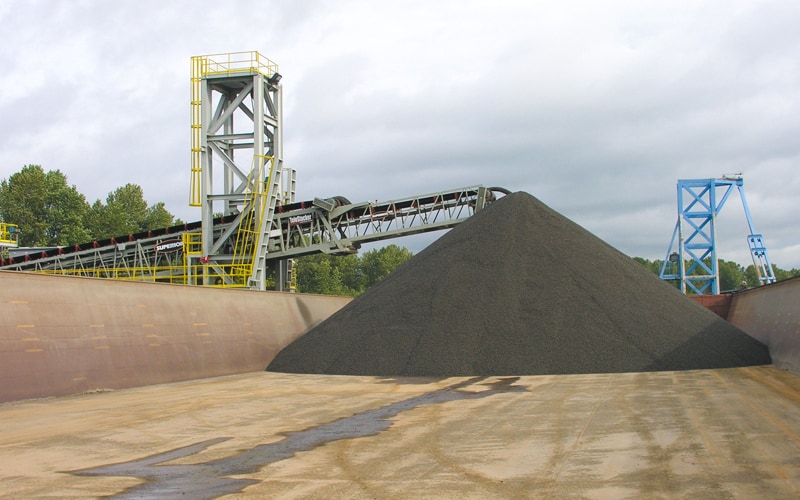
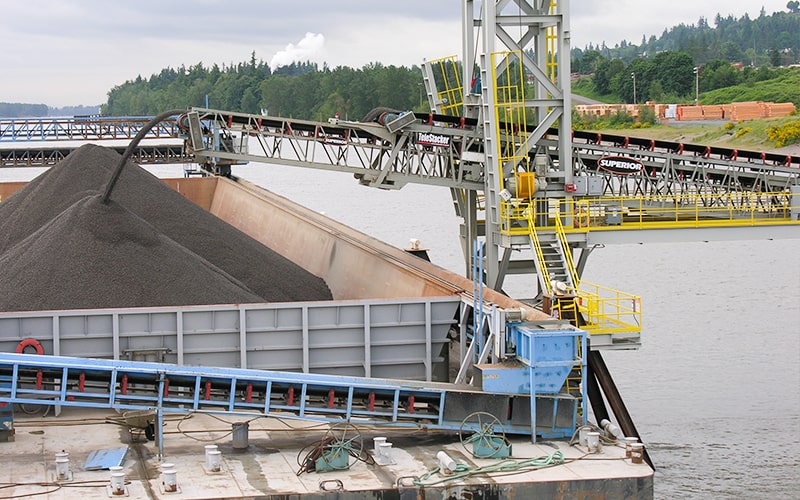
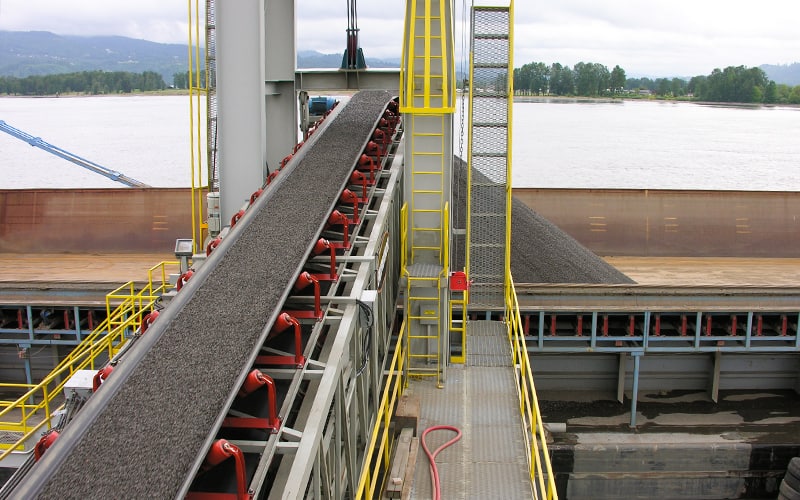
The Patriot Cone is equipped with Vantage® Automation, which is completely designed and built in-house by Superior Industries. Anchor Stone Plant Operator/Electrician Joey Doolittle says the automation system is very user-friendly. “The touchscreen is very simple to operate, and we can train a new person on it very quickly,” he says.
As an electrician, Doolittle stresses that that one of the best features of the system is its sensor communication network that accesses a standard 4-wire cable system from the cone crusher to all auxiliary systems. “This streamlines setup, diagnostics, and troubleshooting. All the sensors wire back to a junction box on the cone, and we had to run one cable from that junction box to the PLC, which cut our wiring time and allows ease of maintenance over time. If there’s a problem with one of the sensors, we can open up that junction box and easily pinpoint it,” he says.
Other systems are far more complicated, says Doolittle, and typically have dozens of separate conductor wires running from the PLC to each component. “These small sensor wires don’t fair too well in the environment, making downtime common, and troubleshooting quite difficult,” he says.
Have questions? Need more information? Complete the form below and we will follow up shortly.
Request More Info
See our privacy policy.

